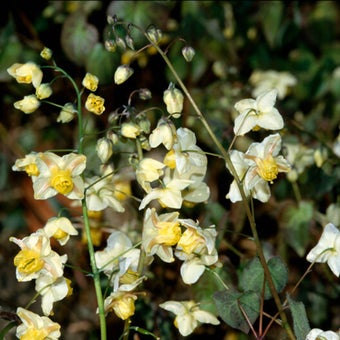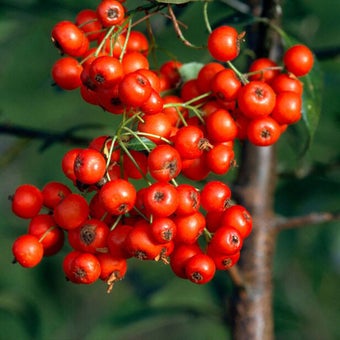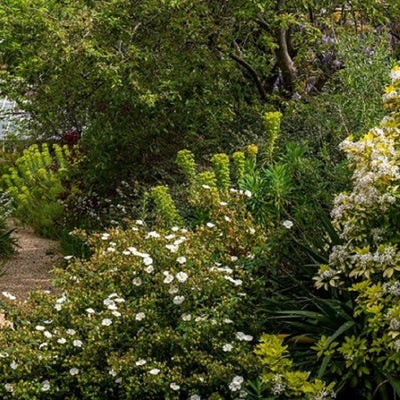
Quick facts
Sloping soil can be prone to slippage
The root systems of plants can be used to hold soil together and stabilise slopes
Sunny slopes often receive more intense sunlight than level ground, requiring sun-tolerant plants
The planting plan
James Lawrence, RHS Principal Horticultural Advisor, has designed this simple, attractive, and most importantly, sustainable border design for you to try at home with plants that are easy to grow, widely available and look good together.
This planting design for a challenging location provides a range of plants that, once established, will thrive in a sloping environment and help to stabilise the soil while providing a variety of interest throughout the year.
A simple planting plan helps to create depth, interest and good coverage in a border.
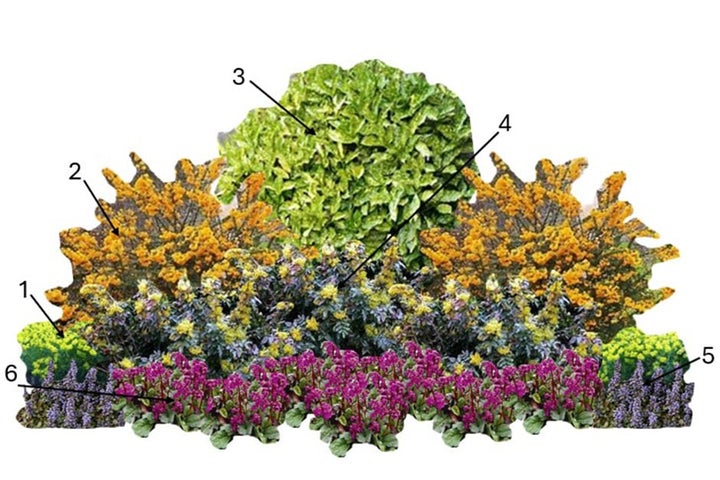
Choosing plants to stabilise semi-shady slopes
The main function of this scheme is to provide planting that can help to protect and stabilise the soil on a semi-shaded slope.
Aucuba and Berberis are tough, resilient plants that can cope with the shade and fast drainage often found on north-facing slopes.
The spreading habit of plants such as the Mahonia and Euphorbia help to protect the soil surface and can reduce soil erosion, which can be more pronounced on slopes with exposed soil. The Bergenia has a fairly shallow but spreading root system, which helps bind the soil surface.
The Ajuga helps to cover ground, reducing erosion and the drying effect of the wind on exposed soil. It will also help prevent unwanted plants from self-seeding by reducing areas of bare soil.
‘Right plant, right place’ is essential here, as plants unable to cope with the sharp drainage and part-shaded will show signs of stress and will need more maintenance.
Additional organic mulching, preferably with homemade compost, can improve soil moisture retention and weed suppression. Mulches should be spread when the soil is already moist, to help trap some of that moisture before it dries out in summer.
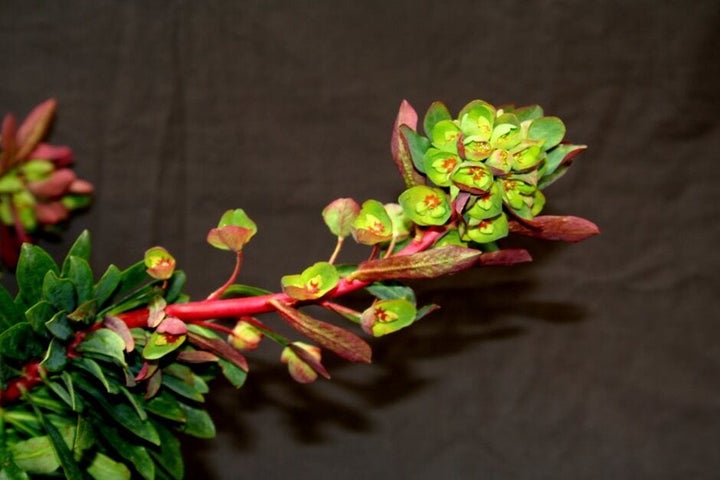

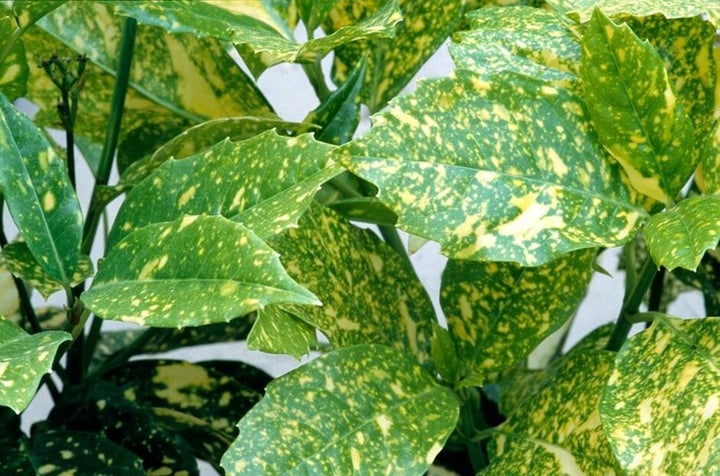
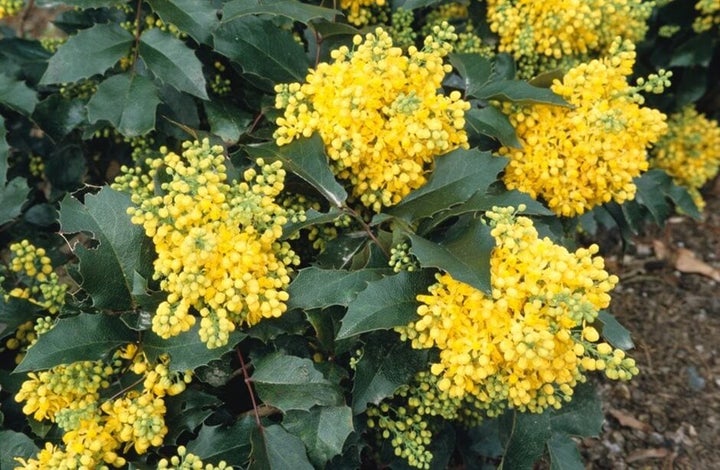
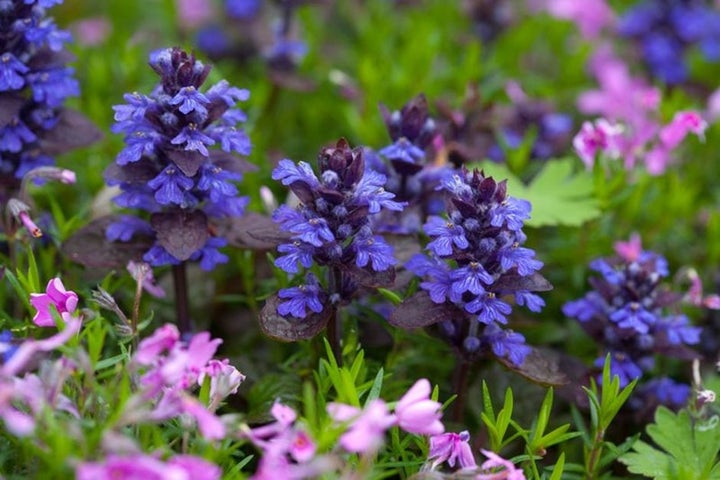
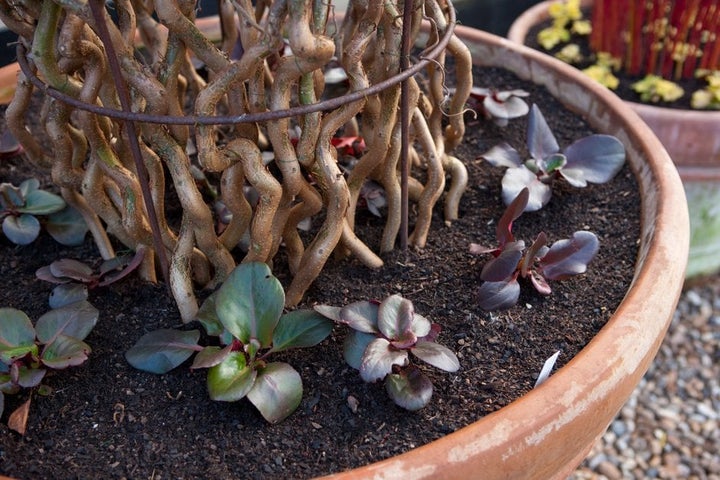
1 - Euphorbia ‘Whistleberry Garnet’ is a compact evergreen , with red-flushed leaves and stems, and yellow-green flowers with a bright red eye in spring.
2 - Berberis darwinii ‘Compacta’ is an evergreen shrub with small, densely-packed leaves that are tinged red in spring. Hanging sprays of small orange flowers with touches of red appear in spring, followed by bunches of blue-black berries.
3 - Aucuba japonica ‘Crotonifolia’ is an evergreen shrub with large leathery leaves that are heavily spotted and blotched with deep yellow. Small purple flowers are followed by bright red berries when pollinated.
4 - Mahonia aquifolium ‘Apollo’ is a low, spreading, small evergreen shrub with glossy deep green leaves that become purplish in winter. In early spring, large clusters of deep yellow flowers are produced in abundance, followed by black berries in late summer and autumn.
5 - Ajuga reptans ‘Catlin’s Giant’ is a low-growing semi-evergreen perennial forming a mat of large, glossy purple-brown leaves, and upright spikes of blue flowers up to 30cm tall.
6 -Bergenia ‘Eroica’ is an evergreen perennial with vivid purple-pink flowers in spring that appear on tall red stems, held above bronze-green leaves that redden in winter.
About semi-shady slopes
Sloping semi-shaded locations can have rapid drainage, with soil vulnerable to erosion. This can mean some plants are vulnerable to drying and damage from root disturbance.
The challenge of growing plants in sloping locations
Semi-shaded slopes can offer plants some daylight and acute drainage, as water runs down the slope. This can result in plants being unable to get the moisture they need. The soil in slopes can be vulnerable to erosion, resulting in a difficult root environment for the plants.
By choosing plants that are adapted to semi-shaded sloping locations, you can keep your border looking good and growing well, and once the plants are established, this will reduce the need for additional resources such as watering.
Why choose a sustainable planting combination?
Using the ethos of ‘right plant, right place’ to create a sustainable planting combination is great for the environment. It helps to avoid waste and the use of products and practices needed to try and help ailing plants, such as applying fertiliser. It also creates robust, long-lived planting that benefits soil health and garden . For more information about sustainable gardening, please see the RHS Sustainability Strategy.
